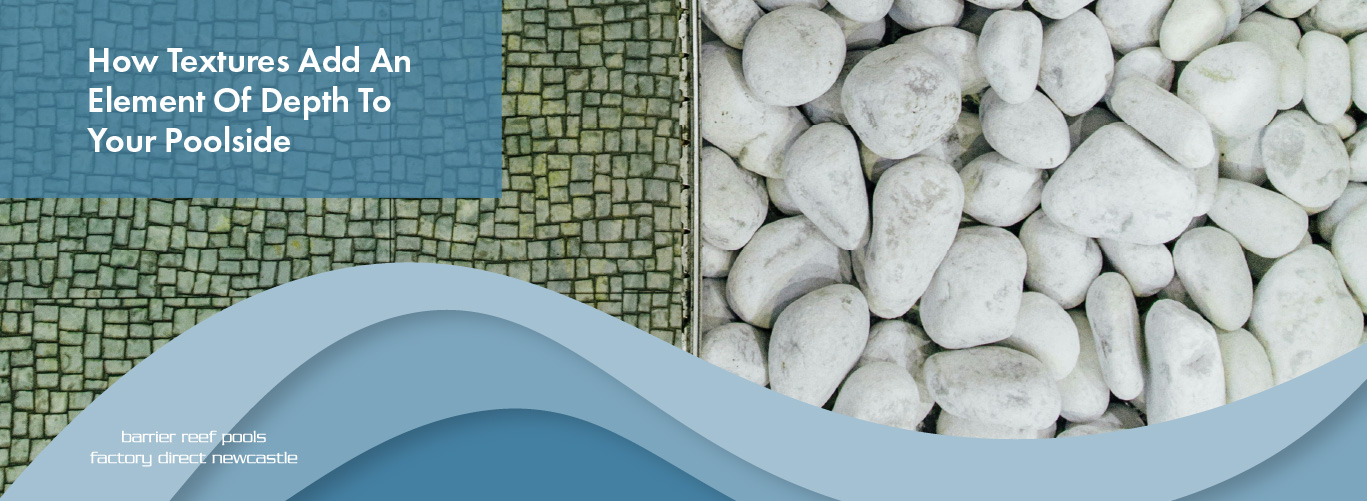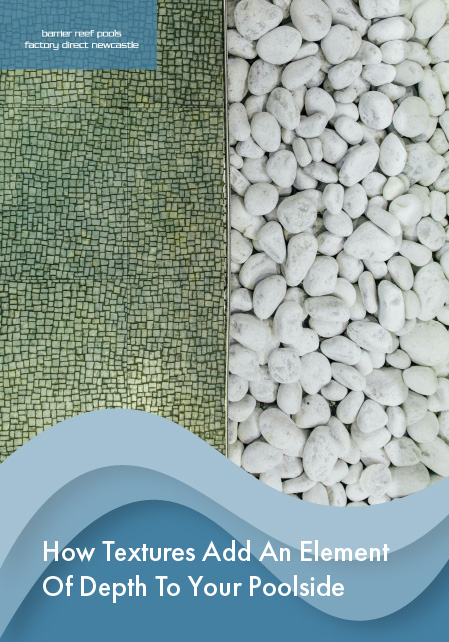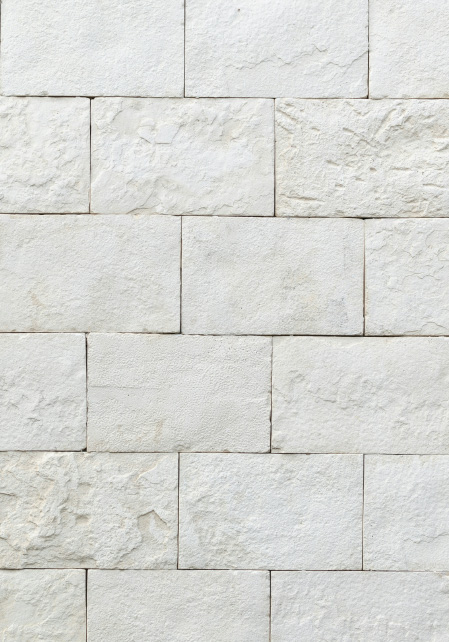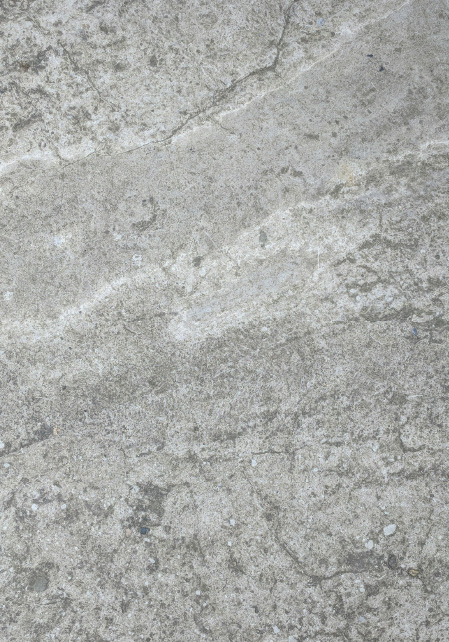How Textures Add an Element of Depth to Your Poolside
Imagine lounging by the pool on a lazy summer afternoon. The sun is high in the sky, casting dappled patterns of light and shadow across the waters. What makes this bucolic scene truly captivating though, is not just the shimmering water, but also the tactile quality of the materials beneath your feet and within your reach. That's the power of textures in poolside design. In this post, we will explore the often-overlooked role of textures in transforming a poolside from a mere amenity into a sensory experience. We'll examine how the interplay of different surface finishes — from the rough-hewn charm of natural stone to the artful intricacies of mosaic tiles — can elevate your pool area into a design masterpiece.

Introduction to the Importance of Textures in Pool Design
Pool design is a realm where aesthetics meet functionality. More than just visual appeal, the choice of textures influences safety, comfort, and the overall ambiance. Textures define the character of the pool, creating personal retreats that are as unique as the homeowners who commission them.
When planning a pool area, many homeowners focus on the type of water feature — infinity, traditional, plunge — or the surrounding landscaping. However, the materials that make up the hardscape, from the pool deck to the pool’s interior finish, deserve significant attention for the role they play in the design.
A sandblasted concrete pool deck can offer sturdy anti-slip properties, while a glass pebble interior surface can add an alluring sheen to the water. Textured stone copings not only provide a safe edge but also bring a natural, earthy quality that can harmonize with the pool’s environment.
Exploring Different Texture Elements
When it comes to textures in pool design, the options are as varied as they are exciting. Here are some textures that stand out for their appeal and practicality.
Natural Stone
Strategically placed natural stone can blend seamlessly with the environment, whether it’s the rugged outcroppings of a mountain retreat or the smooth contours of a desert landscape. Materials like travertine, granite, and slate have unique textural qualities that add character to the poolside. Think about a flagstone pathway leading to a rocky edge with a gentle cascade of water spilling into the pool or a mosaic of colours and shapes reflecting in the surface.
Mosaic Tiles
Mosaics are small pieces of tile, glass, or stone arranged to create patterns, images, or designs. They are a favourite among pool designers for their ability to add intricate detail and a pop of colour. Mosaic tiles can create an artistic focal point, such as a whimsical sea creature at the pool bottom, or a vibrant geometric design along the waterline that dances in the sunlight.
Exposed Aggregate
Exposed aggregate is a concrete mix that has its top layer removed, revealing the texture of the stones within. It provides a durable, non-skid surface without sacrificing visual interest. Stamped aggregates can mimic the look and feel of natural materials at a fraction of the cost, making it a versatile and attractive option for pool decks.

Practical Advice on Choosing the Right Textures for Your Pool
Selecting the right textures for your poolside is a balancing act of personal taste, functional needs, and budget considerations. Here are some tips to guide your selection process.
Consider the Climate and Environment
The textures you choose should be conducive to your local climate. For example, surfaces that become hot under the sun may not be suitable for areas with scorching summers, and high-maintenance materials may be impractical for harsh winters. Likewise, the natural materials should complement the surrounding environment without clashing.
Balance Aesthetics with Safety
While a polished stone may be visually appealing, it can be dangerously slippery when wet. Always consider safety when choosing textures, especially for surfaces that will be frequently transited, such as pool decks. There are plenty of options that offer a compromise, providing both beauty and an anti-slip finish.
Test for Comfort
The edges of your pool and the materials used within it should also be tested for comfort. No one wants a pool they can’t enjoy, and sharp edges or rough finishes can be painful to touch or step on.
Maintenance Tips for Textured Pool Surfaces
Maintaining the textured surfaces of your pool area is key to preserving their beauty and functionality.
Regular Cleaning
Pools should be regularly cleaned to prevent the buildup of algae and other unsightly and potentially hazardous materials. Use the appropriate tools and cleaning solutions for the specific texture and material of your pool.
Sealing and Refinishing
Some materials require periodic sealing to maintain their quality. Consult with a professional to understand the sealing schedule for your surface. Refinishing may also be necessary over the years to keep your pool looking its best.
Repair Damage Promptly
Any chips, cracks, or other damage to pool surfaces should be repaired as soon as possible to prevent further deterioration and to maintain safety.

Emerging Texture Trends
The world of pool design is dynamic, with new trends constantly emerging. Texture innovation is no exception, and we’re seeing several trends shaping the future of pool construction.
Sustainable Textures
With an increasing focus on sustainable design, we’re seeing a rise in the use of eco-friendly and locally sourced materials. Permeable pavers, natural stone, and reclaimed wood are becoming more popular as homeowners seek to minimize their environmental impact.
Tech-Infused Textures
Advancements in technology are now allowing for the incorporation of smart materials into pool design. We’re beginning to see textures with built-in heating elements for year-round use, as well as surfaces that change in response to touch or temperature. These tech-infused textures add a layer of interactivity and convenience to pool design.
Multi-Textured Pools
Combining different textures, such as smooth plaster with mosaic tiles or rough stone with glass beads, is creating multi-textured pools with dynamic visual and sensory appeal. These pools take the concept of textual depth to another level, offering a rich and varied experience that evolves with the light and movement of the day.
Conclusion: The Transformative Power of Textures in Pool Design
Texture is an integral part of pool design that shouldn’t be overlooked. It is more than just a visual element; it engages our sense of touch, provides safety, and creates an immersive environment. With the right combination of textured elements, a poolside can become a personal oasis that reflects individual style and caters to the practical needs of its users.
Whether you’re building a new pool or revamping an existing one, a thoughtful approach to the textures used will ensure that your pool is not only beautiful but also a delight to all your senses. Remember to select materials that resonate with the local climate and environment, prioritise safety, test for comfort, and plan for regular maintenance.
The poolside of your dreams is within reach, and it’s the granular details that will make all the difference. Take time to select textures that resonate with you, and celebrate the unique character they bring to your home’s outdoor living space.
How Textures Add an Element of Depth to Your Poolside
Imagine lounging by the pool on a lazy summer afternoon. The sun is high in the sky, casting dappled patterns of light and shadow across the waters. What makes this bucolic scene truly captivating though, is not just the shimmering water, but also the tactile quality of the materials beneath your feet and within your reach. That's the power of textures in poolside design. In this post, we will explore the often-overlooked role of textures in transforming a poolside from a mere amenity into a sensory experience. We'll examine how the interplay of different surface finishes — from the rough-hewn charm of natural stone to the artful intricacies of mosaic tiles — can elevate your pool area into a design masterpiece.

Introduction to the Importance of Textures in Pool Design
Pool design is a realm where aesthetics meet functionality. More than just visual appeal, the choice of textures influences safety, comfort, and the overall ambiance. Textures define the character of the pool, creating personal retreats that are as unique as the homeowners who commission them.
When planning a pool area, many homeowners focus on the type of water feature — infinity, traditional, plunge — or the surrounding landscaping. However, the materials that make up the hardscape, from the pool deck to the pool’s interior finish, deserve significant attention for the role they play in the design.
A sandblasted concrete pool deck can offer sturdy anti-slip properties, while a glass pebble interior surface can add an alluring sheen to the water. Textured stone copings not only provide a safe edge but also bring a natural, earthy quality that can harmonize with the pool’s environment.
Exploring Different Texture Elements
When it comes to textures in pool design, the options are as varied as they are exciting. Here are some textures that stand out for their appeal and practicality.
Natural Stone
Strategically placed natural stone can blend seamlessly with the environment, whether it’s the rugged outcroppings of a mountain retreat or the smooth contours of a desert landscape. Materials like travertine, granite, and slate have unique textural qualities that add character to the poolside. Think about a flagstone pathway leading to a rocky edge with a gentle cascade of water spilling into the pool or a mosaic of colours and shapes reflecting in the surface.
Mosaic Tiles
Mosaics are small pieces of tile, glass, or stone arranged to create patterns, images, or designs. They are a favourite among pool designers for their ability to add intricate detail and a pop of colour. Mosaic tiles can create an artistic focal point, such as a whimsical sea creature at the pool bottom, or a vibrant geometric design along the waterline that dances in the sunlight.
Exposed Aggregate
Exposed aggregate is a concrete mix that has its top layer removed, revealing the texture of the stones within. It provides a durable, non-skid surface without sacrificing visual interest. Stamped aggregates can mimic the look and feel of natural materials at a fraction of the cost, making it a versatile and attractive option for pool decks.

Practical Advice on Choosing the Right Textures for Your Pool
Selecting the right textures for your poolside is a balancing act of personal taste, functional needs, and budget considerations. Here are some tips to guide your selection process.
Consider the Climate and Environment
The textures you choose should be conducive to your local climate. For example, surfaces that become hot under the sun may not be suitable for areas with scorching summers, and high-maintenance materials may be impractical for harsh winters. Likewise, the natural materials should complement the surrounding environment without clashing.
Balance Aesthetics with Safety
While a polished stone may be visually appealing, it can be dangerously slippery when wet. Always consider safety when choosing textures, especially for surfaces that will be frequently transited, such as pool decks. There are plenty of options that offer a compromise, providing both beauty and an anti-slip finish.
Test for Comfort
The edges of your pool and the materials used within it should also be tested for comfort. No one wants a pool they can’t enjoy, and sharp edges or rough finishes can be painful to touch or step on.
Maintenance Tips for Textured Pool Surfaces
Maintaining the textured surfaces of your pool area is key to preserving their beauty and functionality.
Regular Cleaning
Pools should be regularly cleaned to prevent the buildup of algae and other unsightly and potentially hazardous materials. Use the appropriate tools and cleaning solutions for the specific texture and material of your pool.
Sealing and Refinishing
Some materials require periodic sealing to maintain their quality. Consult with a professional to understand the sealing schedule for your surface. Refinishing may also be necessary over the years to keep your pool looking its best.
Repair Damage Promptly
Any chips, cracks, or other damage to pool surfaces should be repaired as soon as possible to prevent further deterioration and to maintain safety.

Emerging Texture Trends
The world of pool design is dynamic, with new trends constantly emerging. Texture innovation is no exception, and we’re seeing several trends shaping the future of pool construction.
Sustainable Textures
With an increasing focus on sustainable design, we’re seeing a rise in the use of eco-friendly and locally sourced materials. Permeable pavers, natural stone, and reclaimed wood are becoming more popular as homeowners seek to minimize their environmental impact.
Tech-Infused Textures
Advancements in technology are now allowing for the incorporation of smart materials into pool design. We’re beginning to see textures with built-in heating elements for year-round use, as well as surfaces that change in response to touch or temperature. These tech-infused textures add a layer of interactivity and convenience to pool design.
Multi-Textured Pools
Combining different textures, such as smooth plaster with mosaic tiles or rough stone with glass beads, is creating multi-textured pools with dynamic visual and sensory appeal. These pools take the concept of textual depth to another level, offering a rich and varied experience that evolves with the light and movement of the day.
Conclusion: The Transformative Power of Textures in Pool Design
Texture is an integral part of pool design that shouldn’t be overlooked. It is more than just a visual element; it engages our sense of touch, provides safety, and creates an immersive environment. With the right combination of textured elements, a poolside can become a personal oasis that reflects individual style and caters to the practical needs of its users.
Whether you’re building a new pool or revamping an existing one, a thoughtful approach to the textures used will ensure that your pool is not only beautiful but also a delight to all your senses. Remember to select materials that resonate with the local climate and environment, prioritise safety, test for comfort, and plan for regular maintenance.
The poolside of your dreams is within reach, and it’s the granular details that will make all the difference. Take time to select textures that resonate with you, and celebrate the unique character they bring to your home’s outdoor living space.



